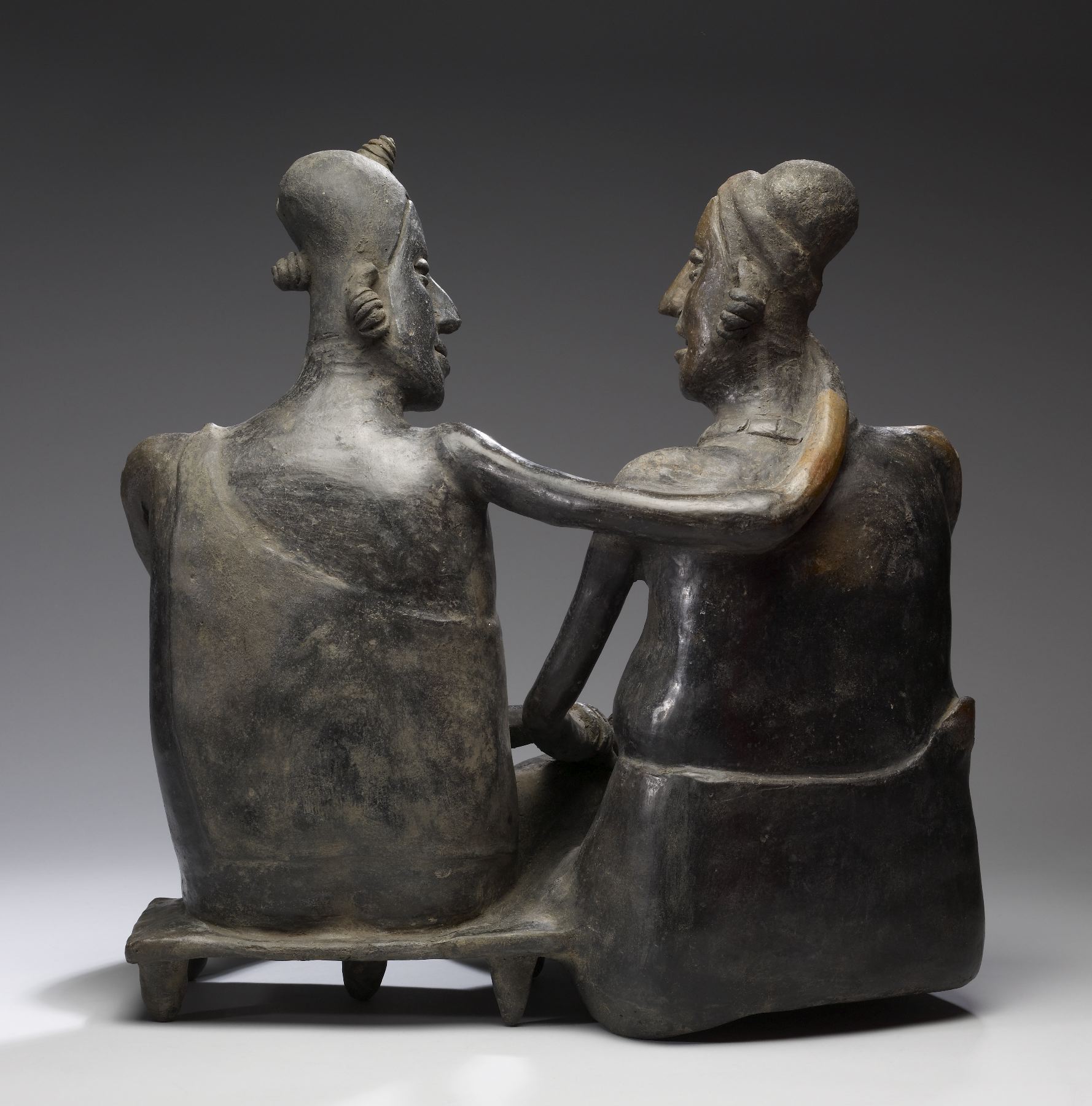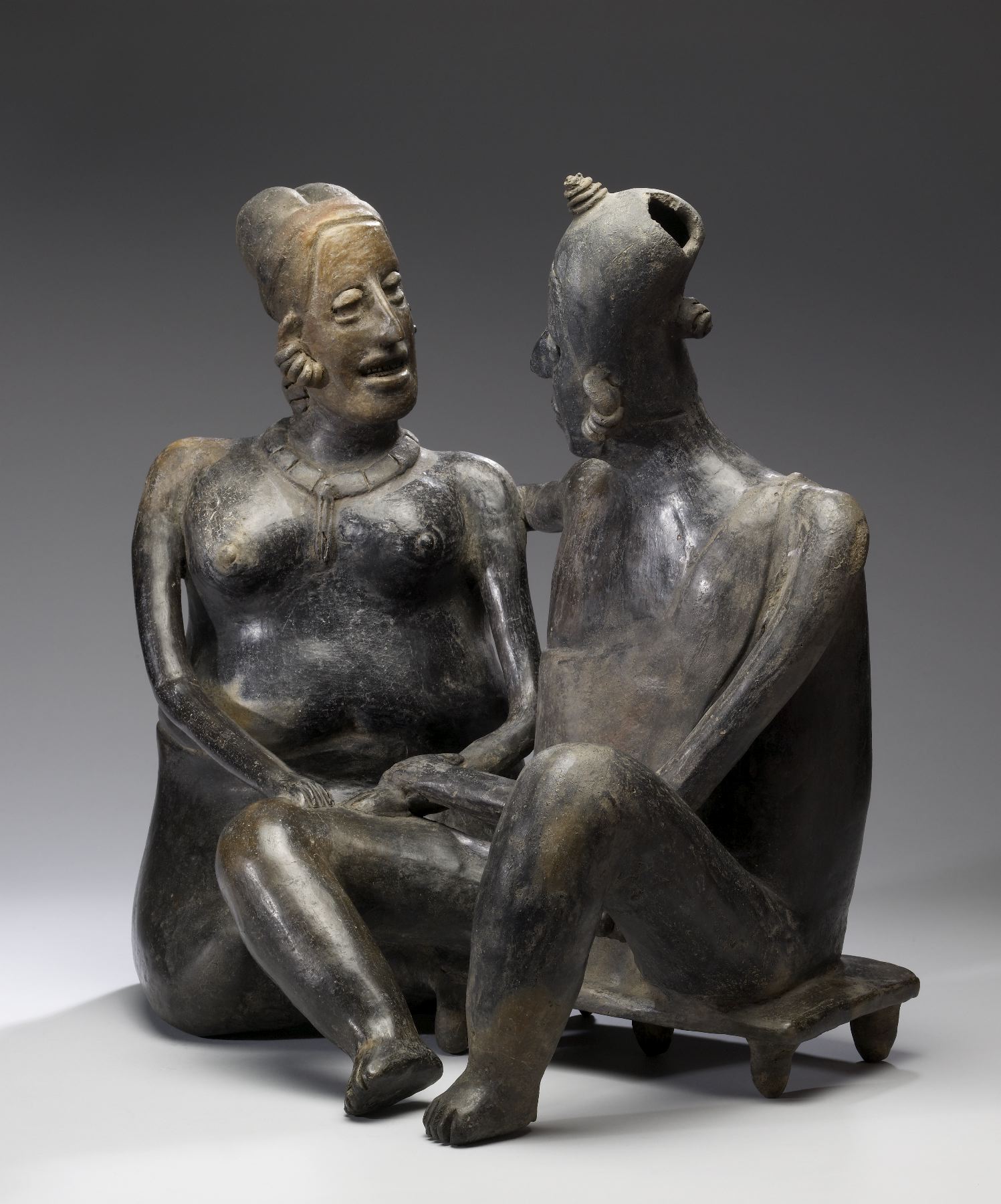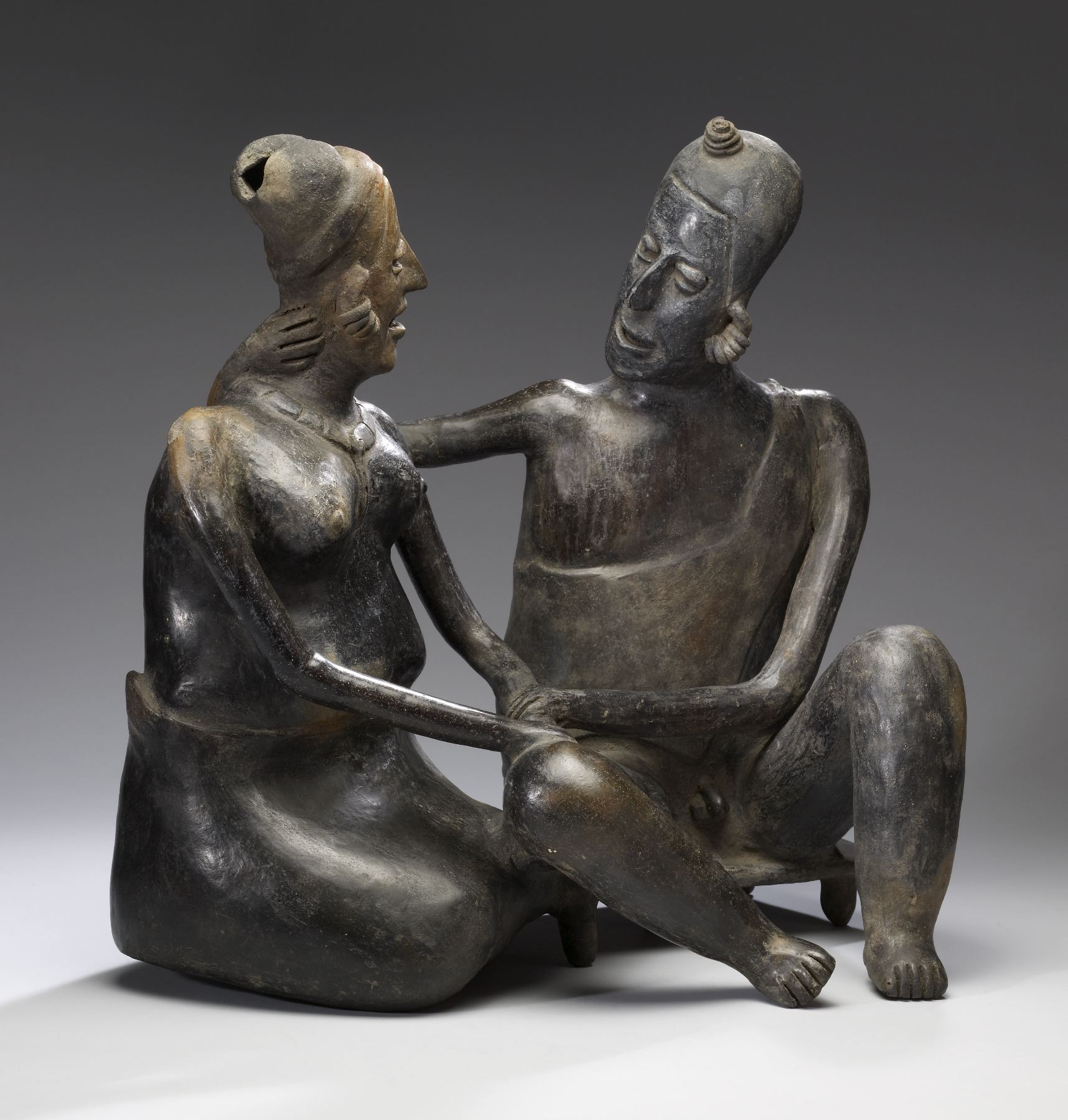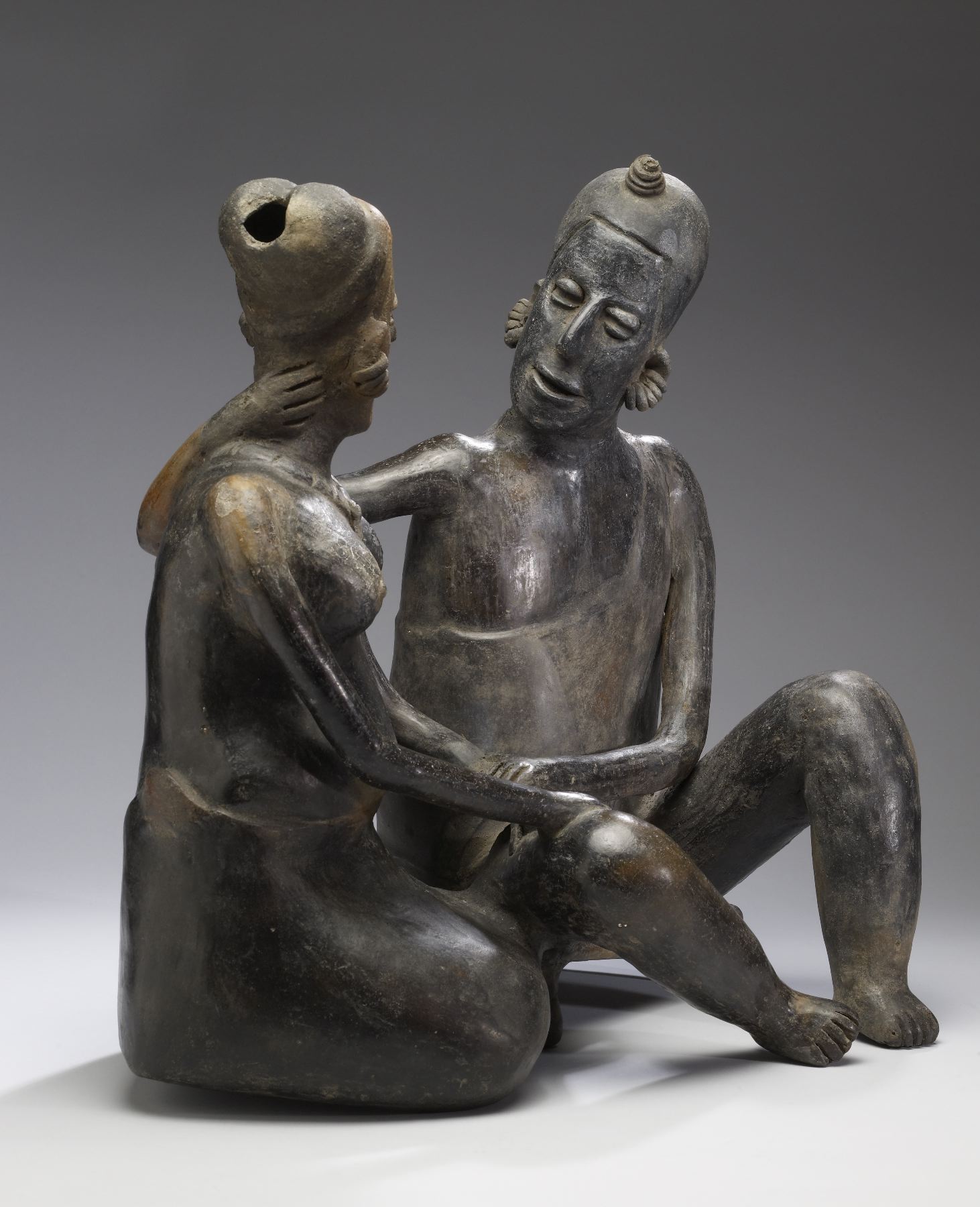Conjoined Man and Woman (Curing Ritual Narrative)
(Ancient Americas )
Conjoined figures constitute an infrequent but not unknown narrative type of West Mexican tomb sculptures. Those from Colima include a family group (man, woman, child), a mother and child, or combat scenes. Combat is mirrored in a warrior-and-captive piece from Jalisco, and male-female pairs are found not only in Jalisco but especially in Nayarit contexts. Other conjoined figures depict a cheekpiercing rite in which two or more men and women participate. Some double figures have been interpreted as portrayals of a marriage or otherwise affianced couple given that the man and woman touch or embrace and visually engage each other with what could be interpreted as a tender gaze of affection, as is seen in this sculpture. However, the rendering of personal affection is rare in Mesoamerican art, and the few Classic Maya examples from Jaina Island are interpreted as symbolic renderings rather than depictions of interpersonal intimacy. And although the often published "marriage couple" pairs of similar-looking male and female figures from West Mexico may imply a local tradition for ceramic portrayals of devoted couples, these pairings have no basis in archaeological reality. Instead, they most likely constitute a fabricated grouping invented by tomb robbers and art dealers. A closer examination of this paired figure artwork suggests an alternative interpretation as a healing ceremony by a shaman-curer and his patient. In myriad similar examples, one of the figures wears a curious panachelike or hornlike element atop his/her head, as seen here, which may identify the person as a shaman. Other conjoined figures feature one member grasping a rattle, rasp, or drum. These instruments are intimately associated with shamanic practice, and they are frequently integral to healing rituals among present-day shaman-curers in Mexico. In other instances, one of the figures holds a small bowl, implying the ingestion of a curing potion. The weight of the available evidence suggests that this exceptionally expressive and sensitive sculpture portrays a curing ceremony rather than an amorous couple. The piece was extensively examined using x-radiography and thermoluminescence (TL), the latter for dating the last firing of the object. The research establishes that the piece has suffered major damage, with all appendages having been repaired. The x-radiography revealed that the sculpture is composed of two figures, but whether they were originally conjoined is difficult to determine because all points where the bodies touch have been repaired. These repairs probably were done at a different time than the manufacture of the piece; the composition of their clay is different from that of the majority of the piece. The joins of the necks strongly suggest the heads are in their original, intended position, which supports their being an authentic conjoined pair. The four TL date samples were taken from only one of the two clay bodies, this choice being by chance rather than intention as the joins were not visible on the object's surface when the samples were taken. All four TL samples indicate a production date of 100 -250 CE.
Provenance
Provenance (from the French provenir, 'to come from/forth') is the chronology of the ownership, custody, or location of a historical object. Learn more about provenance at the Walters.
Ron Messick Fine Arts, Santa Fe, New Mexico; purchased by John G. Bourne, Sante Fe, 2002; given to John G. Bourne Foundation, 2002 [1]; given to Walters Art Museum, 2013.
[1] according to Bourne Foundation accounts
Exhibitions
| 2012-2013 | Exploring Art of the Ancient Americas: The John Bourne Collection Gift. The Walters Art Museum, Baltimore; Frist Center for the Visual Arts, Nashville. |
Conservation
| Date | Description | Narrative |
|---|---|---|
| 1/1/2011 | Treatment | This sculpture was broken and reconstructed from more than 50 fragments, but modern paint concealed the repaired areas. X-radiography reveals a network of conjoined fragments, but the complicated nature of the sculpture necessitated further study. Computed tomography (CT scan) images from the University of Maryland show the use of two clays of different densities. CT scans additionally show no continuous connection between the two figures, calling into question the current assembly. Four thermoluminescence analyses, two from each figure, indicate that portions of the sculpture were last fired between 1,500 and 2,400 years ago, which yields a date consistent with the accepted date of manufacture between 100 BCE and 300 CE. |
Geographies
Mexico, Jalisco (Place of Origin)
Measurements
H: 18 3/8 x W: 17 3/8 x D: 13 3/4 in. (46.7 x 44.2 x 35 cm)
Credit Line
Gift of John G. Bourne Foundation, 2013
Location in Museum
Not on view
Accession Number
In libraries, galleries, museums, and archives, an accession number is a unique identifier assigned to each object in the collection.
In libraries, galleries, museums, and archives, an accession number is a unique identifier assigned to each object in the collection.
2009.20.149










